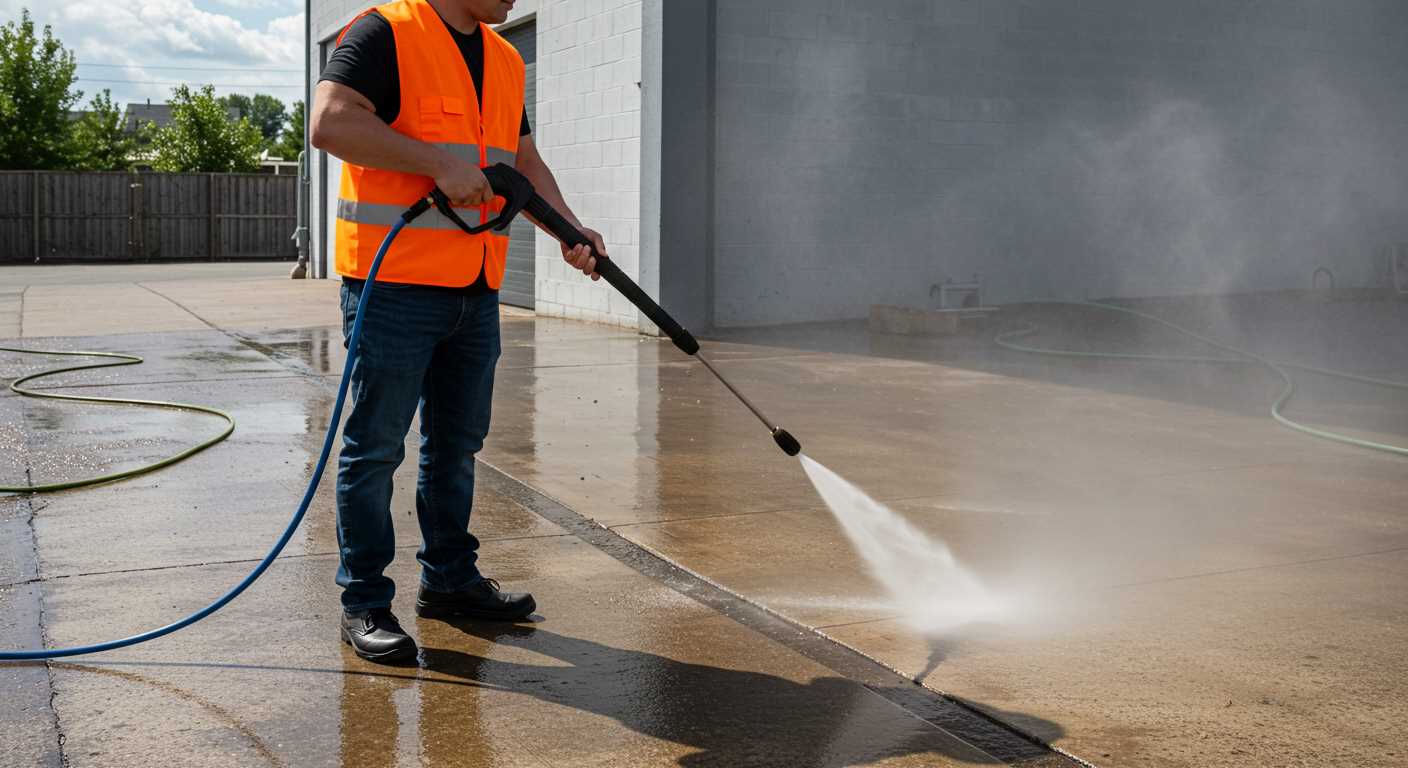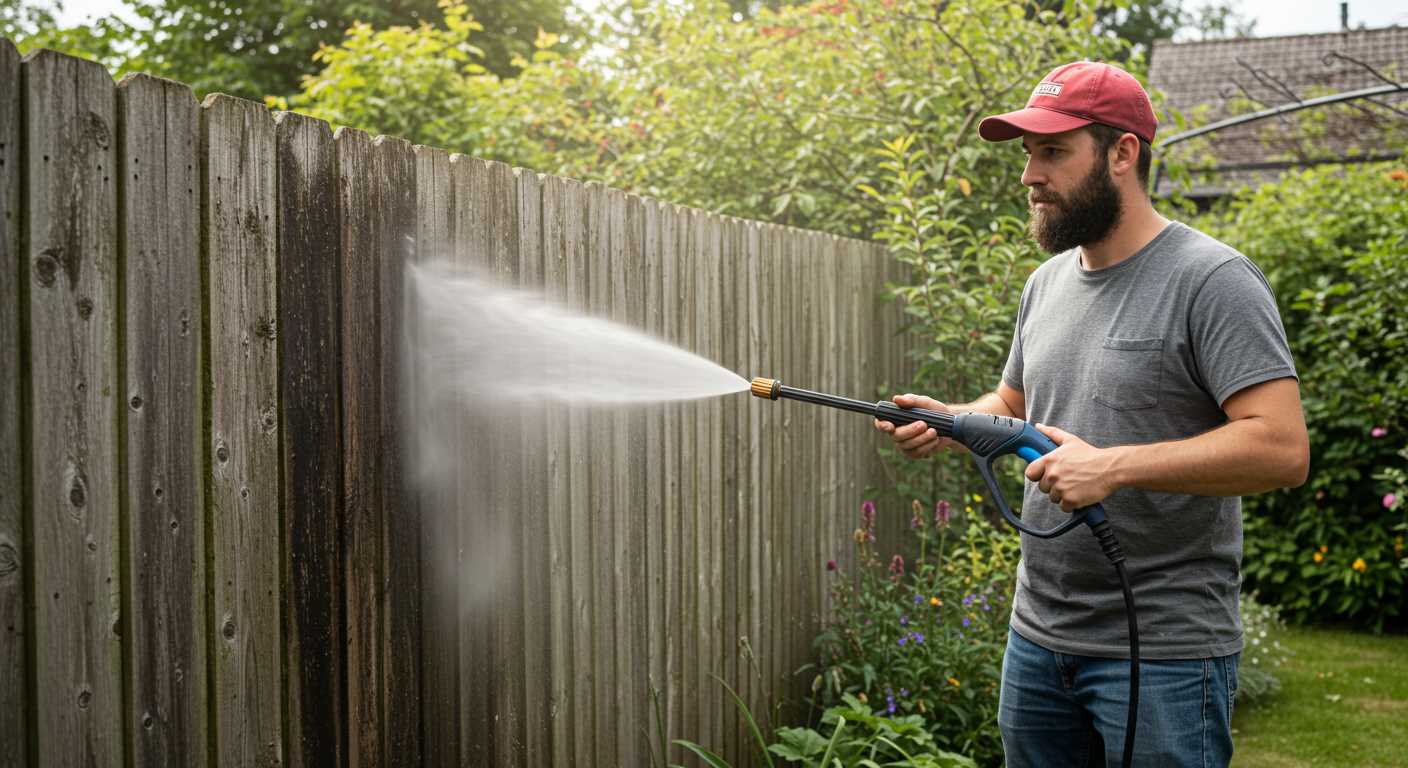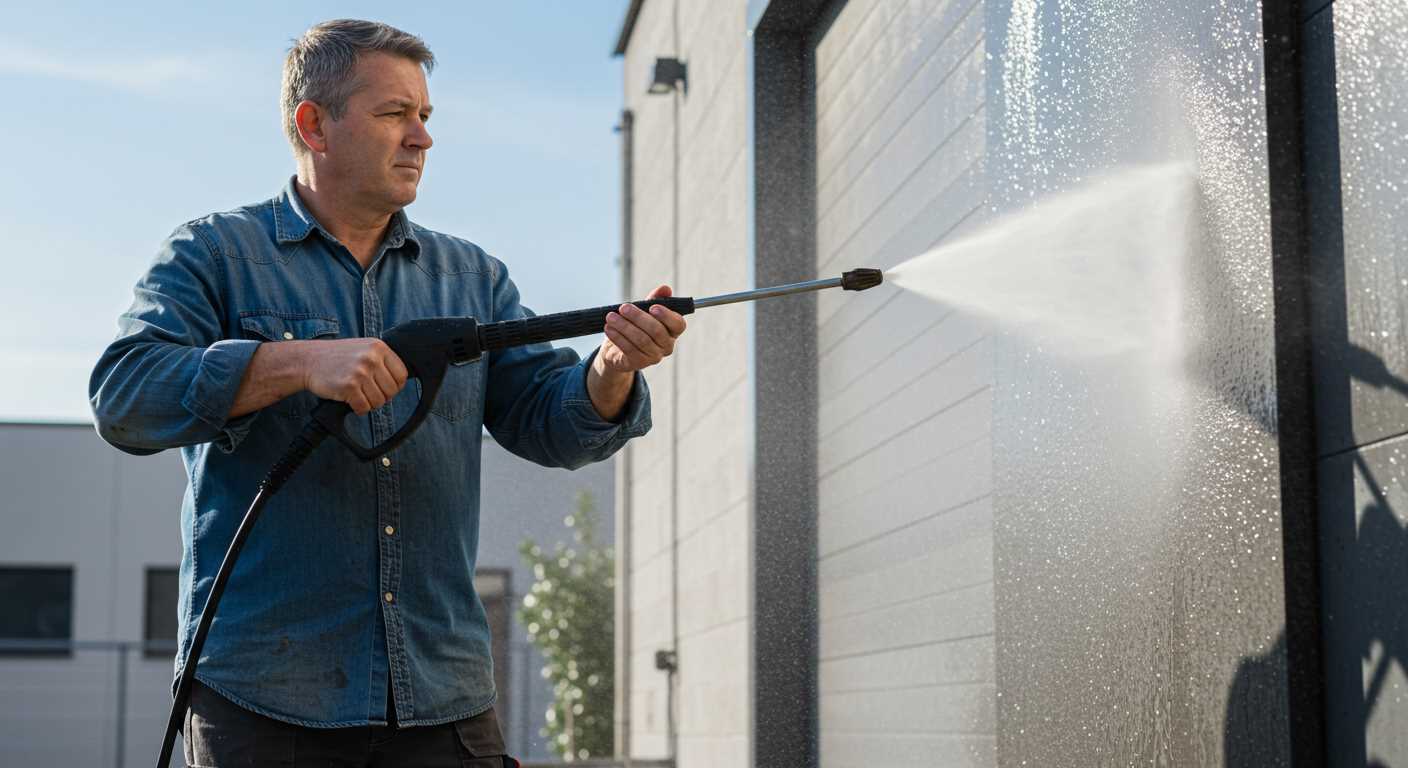



Opt for a model with a motor power rating between 1500 to 3000 watts, which strikes a balance between sufficient cleaning strength and manageable noise levels. Electric units typically deliver lower pressure and flow rates, while gas-powered options offer higher performance, making them suitable for demanding tasks.
Pay attention to the pressure output; units should provide at least 1300 psi for light tasks like washing cars and up to 3000 psi for tougher jobs, such as cleaning driveways. Remember that flow rate, measured in litres per minute, also impacts efficiency–at least 5 litres per minute is advisable for optimal performance.
Consider additional features such as adjustable nozzles, which enhance versatility, and onboard storage for accessories, making the process more convenient. Opting for a model with a longer hose and power cord can greatly increase your reach, reducing the need to frequently move the machine.
Look into the weight and portability of the unit; lighter models are easier to manoeuvre but may compromise durability. If you have storage constraints, evaluate compact designs that do not sacrifice functionality. Prioritise brands known for reliability and customer service–it can make all the difference when issues arise.
Assessing Your Cleaning Needs and Tasks
Identify your specific cleaning tasks to select an appropriate model. Evaluate surfaces you plan to tackle such as driveways, decks, or vehicles. Different tasks may require varying pressure ratings and flow rates. For instance, concrete surfaces typically require higher pressure compared to delicate materials like wood or car paint.
Surface and Material Considerations
Conduct a thorough analysis of the materials you’ll clean:
| Surface Type | Recommended Pressure (PSI) | Notes |
|---|---|---|
| Concrete | 3000+ PSI | Ideal for tough stains and grime. |
| Wood | 1500-2000 PSI | Lower pressure prevents damage. |
| Vehicles | 1200-1900 PSI | Ensures safe cleaning without stripping paint. |
| Patios & Decks | 2000-2700 PSI | Effective for general debris removal. |
Size and Scope of Tasks
Determine how often you’ll use the equipment and for what duration. Occasional users may opt for compact models, while frequent cleaners might benefit from heavy-duty versions. Also, estimate the cleaning area; if you’re tackling large surfaces, flow rate (GPM) becomes significant, as higher rates can reduce cleaning time substantially.
Understanding Pressure Ratings and Their Impact
Check the PSI (Pounds per Square Inch) rating before making a decision. This measure indicates the cleaning force of the device. For light cleaning tasks, such as washing cars or decks, a unit with 1300-1900 PSI will suffice. Heavy-duty jobs, like blasting away stubborn stains or grime from concrete, require between 2500-3000 PSI for optimal performance.
Additionally, consider the GPM (Gallons per Minute) metric, as it impacts the water flow rate. A higher GPM signifies quicker cleaning. Typically, a machine with at least 1.5 GPM is adequate for most tasks, whilst high-performance models may reach 3 GPM or more, catering to larger areas or more extensive cleaning undertakings.
The relationship between PSI and GPM matters greatly. A high PSI with low GPM can mean a concentrated but slower cleaning process, while balanced figures allow for effective and efficient outcomes. It’s wise to choose a combination that aligns with specific tasks. For example, tackling large surfaces may benefit from higher GPM, whereas intricate detailing may require higher PSI.
Consider also the type of motor–electric or gas. Electric machines typically range between 1300 to 2000 PSI, ideal for residential uses. Gas models often exceed 3000 PSI, making them suitable for commercial applications and large-scale projects.
When assessing the appropriate power level, always evaluate surface types and the nature of grime to avoid damage or ineffective cleaning. Avoid choosing a machine solely based on figures; real-world performance and user reviews provide valuable insights into reliability and effectiveness.
Evaluating Different Types of Pressure Cleaning Equipment
Two primary categories dominate the market: electric and petrol models. Electric units offer convenience and are ideal for light to moderate tasks, making them suitable for homeowners. My experience indicates they’re quieter, easier to maintain, and usually lighter, enhancing portability. However, they have limitations regarding pressure and flow rate compared to their petrol counterparts.
Electric Equipment
Electric machines often come with lower pressure ratings, typically around 1000 to 1900 PSI. This range effectively handles tasks like washing patios, cars, and outdoor furniture. I recommend selecting models with a longer hose and an adequate power cord for better reach and accessibility. Additional features such as multiple nozzle tips increase versatility, allowing for different cleaning tasks without requiring additional tools.
Petrol Units

Petrol-powered machines excel in high-pressure scenarios, usually ranging from 2000 to 4000 PSI. These variants are more suitable for heavy-duty applications, including grime removal from driveways and façades. Be mindful of weight and fuel storage requirements, as these units tend to be bulkier and require more maintenance. Opt for a model that balances power with user-friendliness, ensuring you can handle it comfortably while performing any task.
Exploring Essential Accessories and Add-ons

Investing in compatible tools can significantly enhance the performance of your cleaning equipment. A high-quality extension wand allows you to reach elevated surfaces without the need for ladders, ensuring safety and efficiency. Look for models that feature adjustable lengths to cater to various tasks.
Surface cleaners are another valuable addition. They provide a rotating cleaning mechanism ideal for flat surfaces such as patios, driveways, and decks. This accessory not only speeds up cleaning but also ensures uniform results, reducing the risk of streaks.
Brush attachments can tackle stubborn grime on vehicles or textured surfaces. Opt for brushes with durable bristles that won’t easily wear out and are suitable for both delicate paints and robust surfaces, providing versatility in your cleaning arsenal.
Foam cannons complement your equipment perfectly, mixing soap with water effectively. This combination produces thick foam that clings to surfaces, allowing for a thorough and more effective wash. Ensure the cannon is suitable for your specific model to achieve optimal results.
Add-on nozzles offer a range of spray patterns, each designed for different applications. For instance, use a narrow, high-pressure jet for stubborn stains and a wider spray for rinsing larger areas quickly. A set that includes multiple sizes can greatly expand your cleaning capabilities.
Hoses are often overlooked yet should not be underestimated. A longer, reinforced hose minimizes kinks and wear while providing greater flexibility and reach across various cleaning areas. Consider a model that is compatible with quick-connect fittings for ease of use.
Finally, don’t forget about protective gear. Always equip yourself with suitable gloves and safety goggles to shield against debris and accidental splashes. Investing in these accessories not only boosts safety but also enhances your overall cleaning experience.
Comparing maintenance requirements and reliability
Reliability is paramount, so prioritise units with lower maintenance needs. Electric models typically require less upkeep than their gas counterparts. No oil changes or air filters mean reduced hassle, thus saving time and costs. However, ensure you inspect seals and hoses regularly to prevent leaks. Check that the model features easy access to parts, which simplifies repairs or replacements.
Inspecting design and construction
Examine the materials used in the build. Stainless steel components tend to outlast plastic, decreasing the likelihood of wear and tear. A robust frame not only prolongs lifespan but aids in stability during use. If frequent transportation is needed, lightweight designs with durable wheels can make the job easier.
Manufacturer reputation and warranty
Investigate brands with a track record of reliability. A longer warranty indicates confidence in their product. Look for customer reviews that mention durability over time and the availability of replacement parts. Reliability often correlates with established manufacturers, making your investment more secure.
Setting a Budget and Analyzing Cost-Value Ratio

Establish a financial limit before diving into options. Knowing the amount to spend sets the stage for choosing the right model without overspending.
Key Factors Influencing Pricing
- Brand Reputation: Established manufacturers often charge higher prices due to reliability and support.
- Specifications: Higher pressure ratings and additional features lead to a higher initial investment.
- Type of Equipment: Electric models tend to be cheaper, while gas variants can be costlier due to their power and versatility.
- Durability: Investing in robust units can save on future repairs or replacements.
Value Assessment
Evaluate how frequently the equipment will be used. For occasional tasks, a lower-cost option may suffice. For regular use, opting for a higher-end model is wise, as it tends to be more reliable and efficient.
Analyse potential savings from time and resources. A more powerful unit might consume less water and complete jobs faster, translating into cost efficiency over time. Calculate these long-term savings against the initial expenditure.
Research user reviews to gauge real-world performance and satisfaction. Models that show high ratings for performance relative to price often represent better value.
- Look for models with strong warranties or service agreements which can indicate confidence in quality.
- Compare features that may not be relevant to your needs; opt for the simpler model if it meets your cleaning requirements effectively.
Ultimately, aligning expectations with suitable financial outlay ensures a wise selection tailored to specific needs without straining finances.







